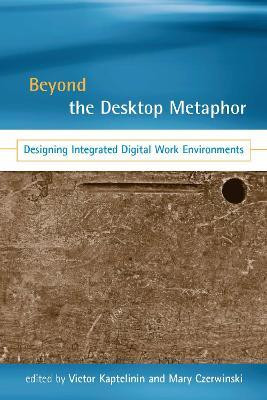Beyond the Desktop Metaphor(English, Hardcover, unknown)
Quick Overview
Product Price Comparison
Leading developers and researchers report on what the next generation of digital work environments may look like, analyzing the theory and practice of designing "out of the box" to facilitate multitasking, collaboration, and multiple technologies. The computer's metaphorical desktop, with its onscreen windows and hierarchy of folders, is the only digital work environment most users and designers have ever known. Yet empirical studies show that the traditional desktop design does not provide sufficient support for today's real-life tasks involving collaboration, multitasking, multiple roles, and diverse technologies. In Beyond the Desktop Metaphor, leading researchers and developers consider design approaches for a post-desktop future. The contributors analyze the limitations of the desktop environment-including the built-in conflict between access and display, the difficulties in managing several tasks simultaneously, and the need to coordinate the multiple technologies and information objects (laptops, PDAs, files, URLs, email) that most people use daily-and propose novel design solutions that work toward a more integrated digital work environment. They describe systems that facilitate access to information, including Lifestreams, Haystack, Task Factory, GroupBar, and Scalable Fabric, and they argue that the organization of work environments should reflect the social context of work. They consider the notion of activity as a conceptual tool for designing integrated systems, and point to the Kimura and Activity-Based Computing systems as examples. Beyond the Desktop Metaphor is the first systematic overview of state-of-the-art research on integrated digital work environments. It provides a glimpse of what the next generation of information technologies for everyday use may look like-and it should inspire design solutions for users' real-world needs.


